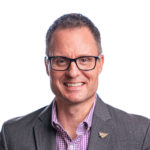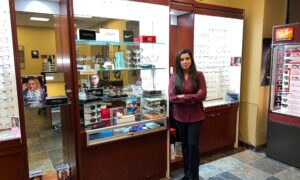Sponsored Content
Sept. 1, 2020
By Ryan Parker, OD, and Ryan Powell, OD
 Have sympathy for the parents who come in with questions about the risks to their child from blue light emitted by digital devices, as kids stuck at home are doing more schooling and entertainment online. It can be a confusing topic.
Have sympathy for the parents who come in with questions about the risks to their child from blue light emitted by digital devices, as kids stuck at home are doing more schooling and entertainment online. It can be a confusing topic.
Even more sympathy if that child is an emerging myope and the parent has questions about that risk, too. Your advice might seem to conflict. For example, blue light from any source presents a risk but increased outdoor time to reduce the risk of developing myopia would also increase exposure to blue light from the sun, which is by far the biggest source of blue light.
Yet these are important conversations that you’ll probably have to repeat to successfully educate your patients. We are still learning about blue light’s impact and new myopia management options are emerging, yet none of these advances matter if patients don’t understand the how and why of caring for their eyes. And there is a steady flow of new research or new therapies to consider. Patients want your guidance. An educative, long-term approach can lead to a more well-informed patient who will be more likely to stay loyal to your practice.
Limiting blue light exposure means getting kids to spend less time staring at a smart phone or a computer screen. It also means getting them to use appropriate eyewear when they’re outside, such as quality sunglasses with blue light protection or photochromic lenses.
We’re starting to see more and more research that the blue light emitted from digital devices isn’t necessarily as damaging as once thought. Yet that information can be misunderstood by parents, who might assume that means blue light doesn’t cause damage to the eye. It can – blue light exposure has a cumulative effect over time. So even these small exposures on digital devices add up and can’t be ignored. The potential for retina damage is real.
Myopia presents its own challenges but it too requires driving home a clear message whenever you get the chance. Given the increase in the frequency of myopia, our mantra to parents is: even if your child can see through a wall, make sure they get regular eye exams. Don’t wait for symptoms. Optometrists can see trends, and getting started early with myopia management is critical. Once a child starts showing symptoms of myopia progression, the train has already left the station.
We do not fully understand all the mechanisms involved in myopic progression. There are both genetic and environmental factors which cause myopia. Given the sudden acceleration of myopic prevalence, though, it is probably safe to say that environmental factors – near work and a lack of outdoor activity – are increasingly playing a role in myopia progression. After all, our genetic makeup hasn’t changed considerably over the past couple of decades, but our visual activities have.
Another challenge is that we’re talking about preventative care, which can fall behind other priorities in a patient’s life. This is especially true regarding macular degeneration, caused by excessive blue light exposure. It is a devastating eye disease and the leading cause of blindness in the United States. And yet it’s a challenge to make that point with younger patients, even with some older patients too, if they haven’t had first-hand experience with it. ECPs can frame preventative eye care the way dentists emphasize regular dental checkups, by pointing out that avoiding vision problems is far better than treating them after they develop.
It is our duty as doctors to give patients the right tools and be their expert. As optometrists we oftentimes get caught up in this; when a patient has good vision and healthy eyes we tell them, “Your eyes look healthy today, so I’ll see you next year.” Seize every opportunity for a teaching moment so you can really have an impact on your patient’s long-term health. It might take a few visits but the more informed your patients are, the more prepared they are to make good decisions for themselves and their children.

Ryan Parker, OD, is director of professional development for Essilor of America, sponsor of this article.

Ryan Powell, OD, is the owner of Vision Source Eyecare in Kansas City, Missouri.













